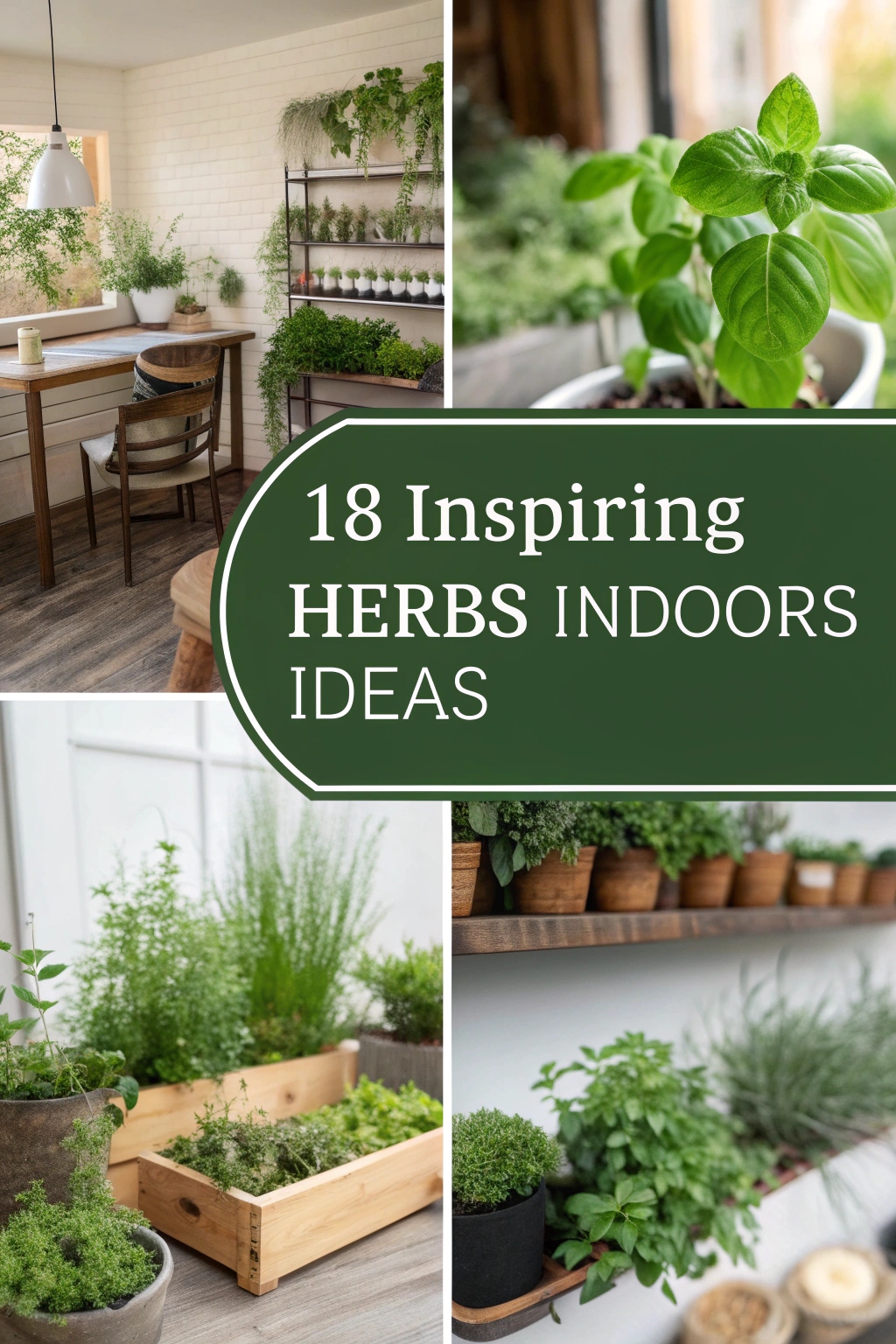14 Eat Your Beans Day Veggie Patch Inspiration Ideas
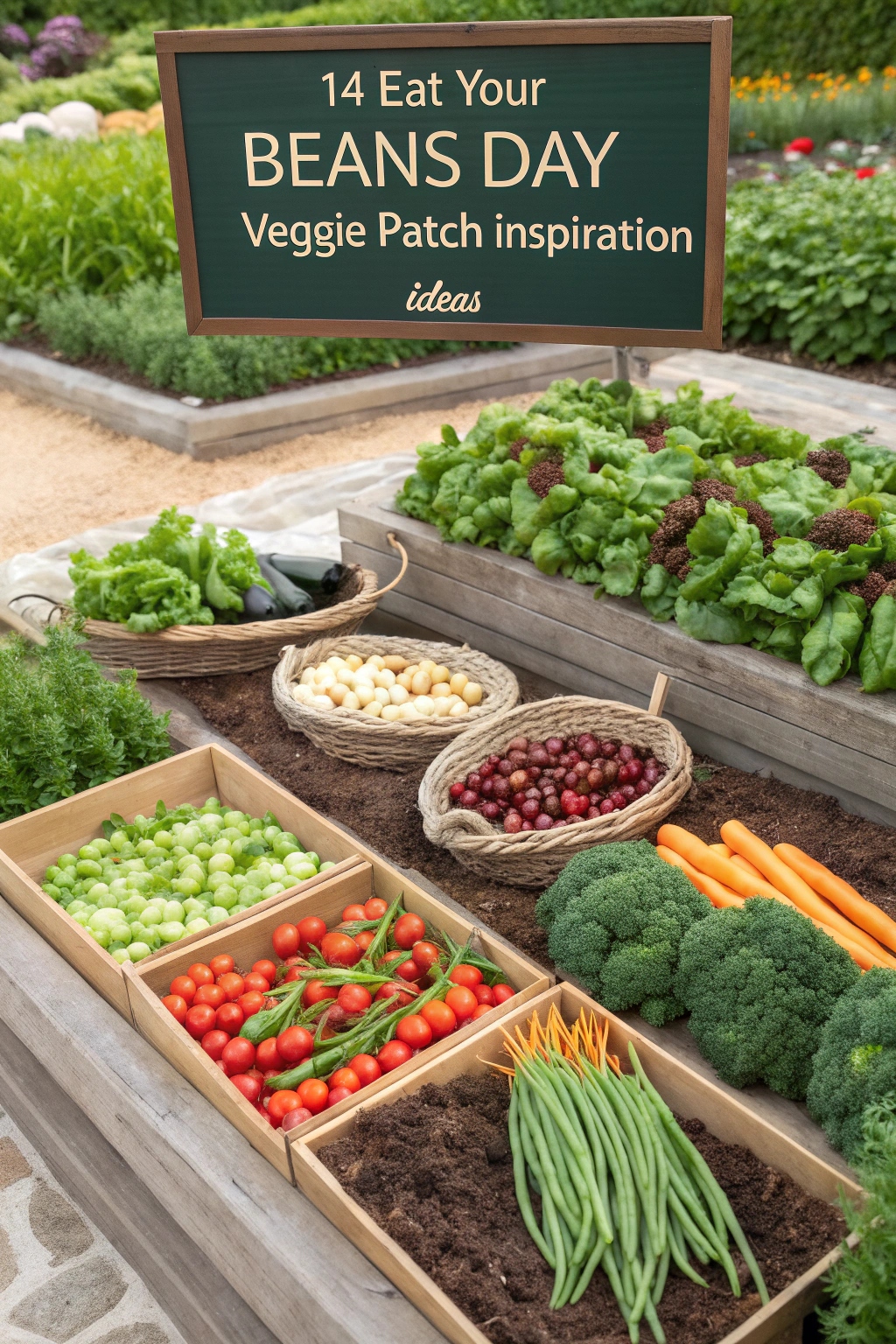
Hey there, let’s kick off your veggie patch journey for Eat Your Beans Day with some inspiring ideas. You can transform your garden by exploring unique bean varieties and smart planting strategies. Consider the science of crop rotation to boost soil health or the practicality of trellis designs for climbers. There’s plenty more to uncover about maximizing your harvest—stick around to explore these 14 detailed tips.
Discovering Unique Bean Varieties
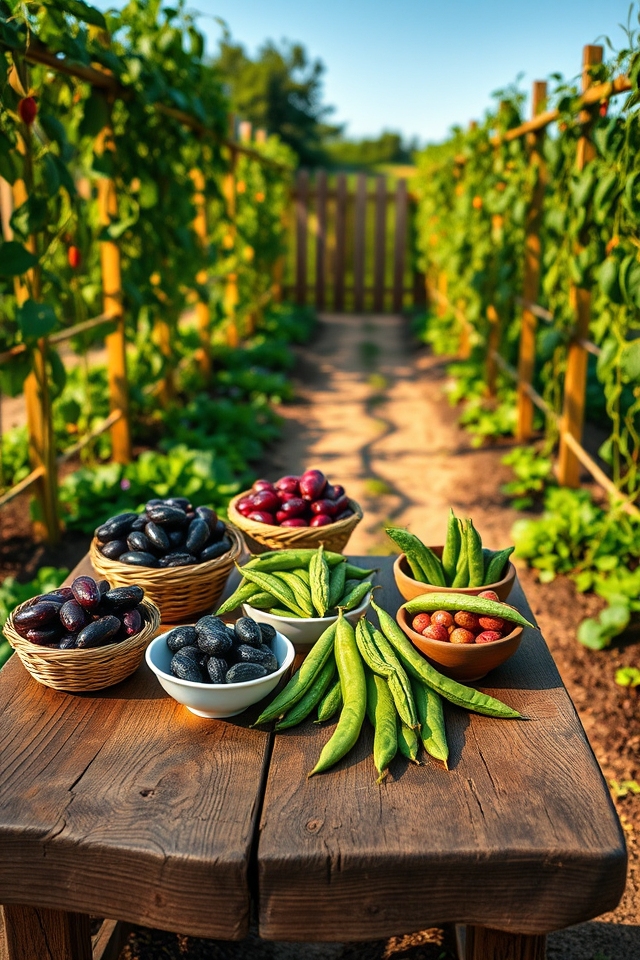
Exploring unique bean varieties can add excitement to your garden and plate on Eat Your Beans Day. From the vibrant purple of Royal Burgundy beans to the striking black and white pattern of Calypso beans, there’s a world of diversity to discover. Try growing Scarlet Runner beans for their beautiful red flowers or Fava beans for their rich, nutty flavor. Each variety offers distinct tastes and visual appeal, making your veggie patch truly special.
Planning Your Bean Garden Layout
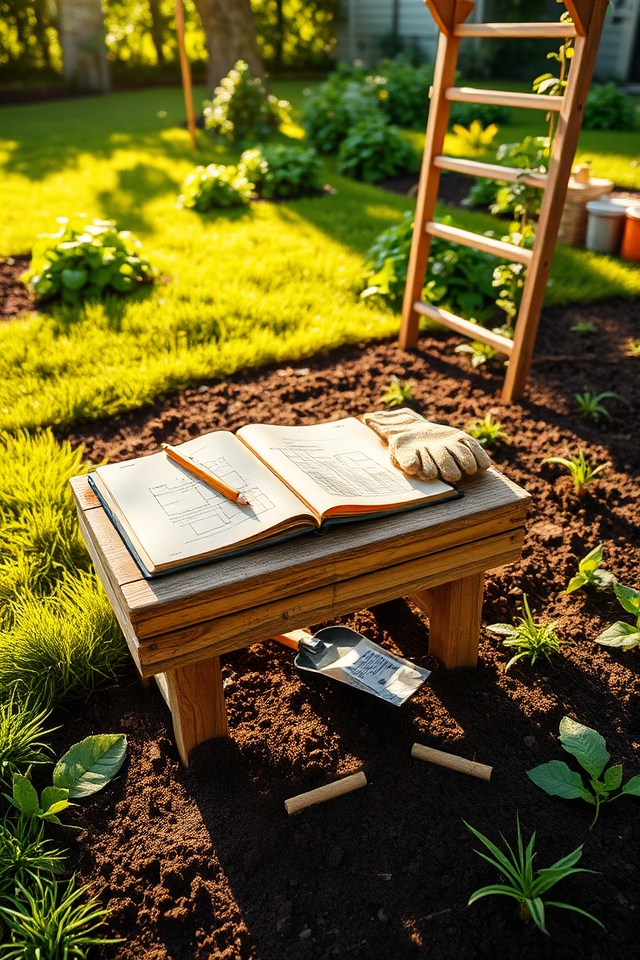
Planning your bean garden layout is essential for a thriving veggie patch. Start by choosing a sunny spot with well-drained soil, as beans love warmth and good drainage. Consider spacing—bush beans need about 2-3 inches between plants, while pole beans require trellises or supports and 6-10 inches between plants. Rotate crops yearly to prevent soil depletion and pests. Sketch a simple layout to visualize rows or beds for easy access and growth.
Building Trellises for Climbing Beans
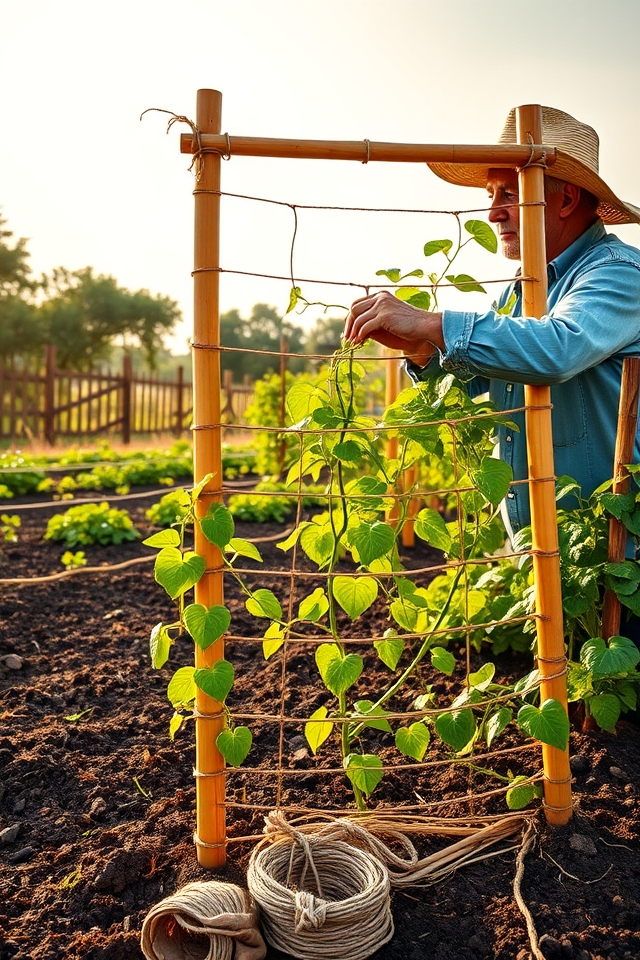
Building trellises for climbing beans is a practical way to maximize garden space and support healthy growth. Use sturdy materials like bamboo, wood, or metal poles to create a frame. Set the trellis in the ground near your bean plants, ensuring it’s at least 6 feet tall for adequate support. Tie string or netting across the frame for beans to climb. This setup not only saves space but also makes harvesting easier and promotes better air circulation.
Companion Planting With Beans
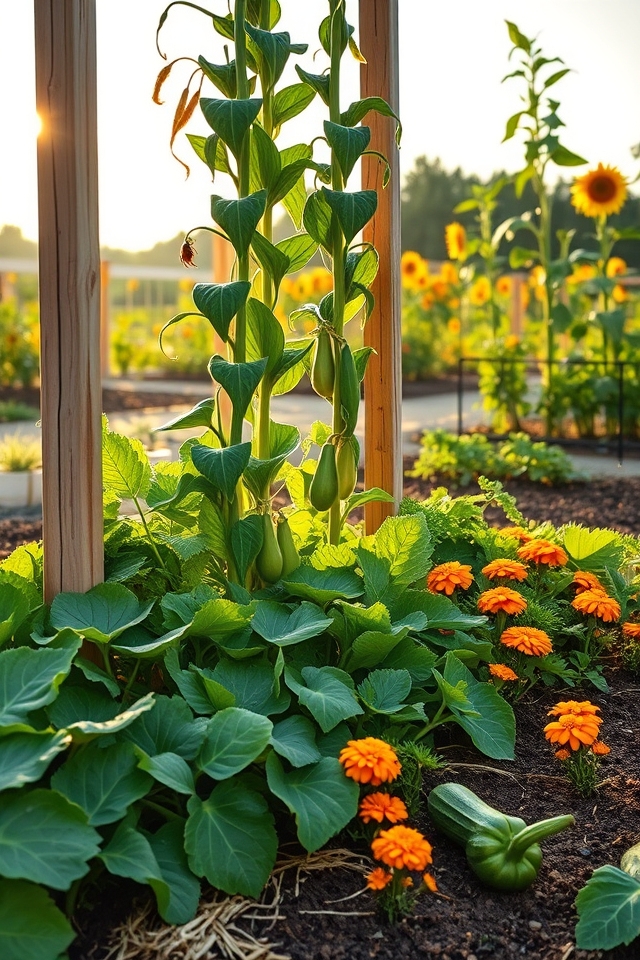
Companion planting with beans is a fantastic way to boost garden health and yield. Beans, as nitrogen-fixers, enrich the soil, benefiting heavy feeders like corn and squash. Planting beans with corn provides a natural trellis for climbing varieties, while squash offers ground cover to suppress weeds. Pairing beans with marigolds can deter pests, and they also thrive alongside carrots and cucumbers. Avoid planting beans near onions or garlic, as these can stunt their growth.
Starting Beans From Seed Indoors
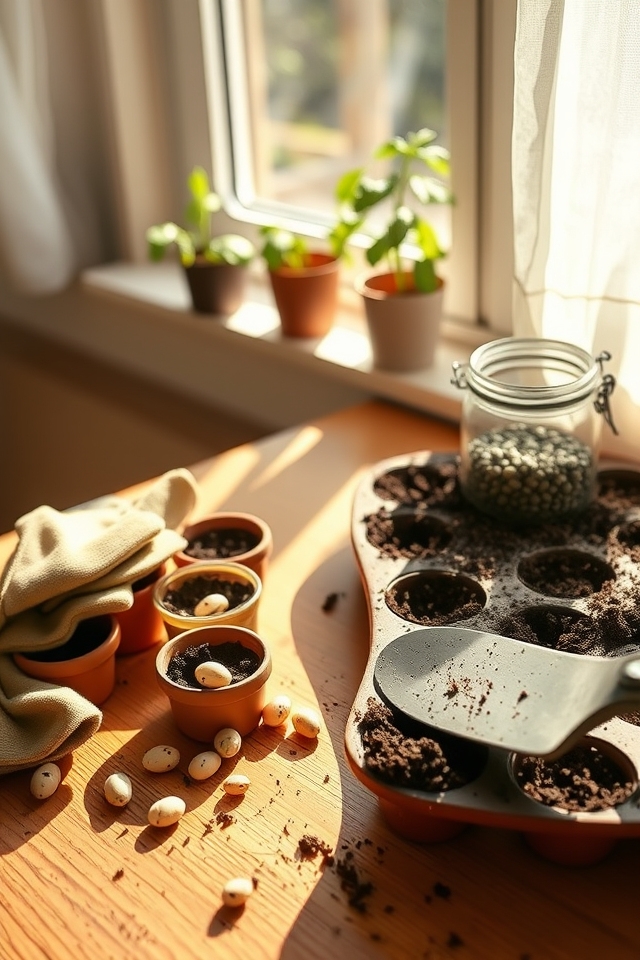
Starting beans from seed indoors is a great way to get a head start on the growing season. Use seed trays or small pots filled with a well-draining potting mix. Plant seeds about 1-2 inches deep, ensuring they’re kept moist but not waterlogged. Place the trays in a warm, sunny spot or under grow lights for 6-8 hours daily. Once seedlings emerge and have a few true leaves, they’re ready to be transplanted outdoors after the last frost.
Creating a Bean Teepee for Kids
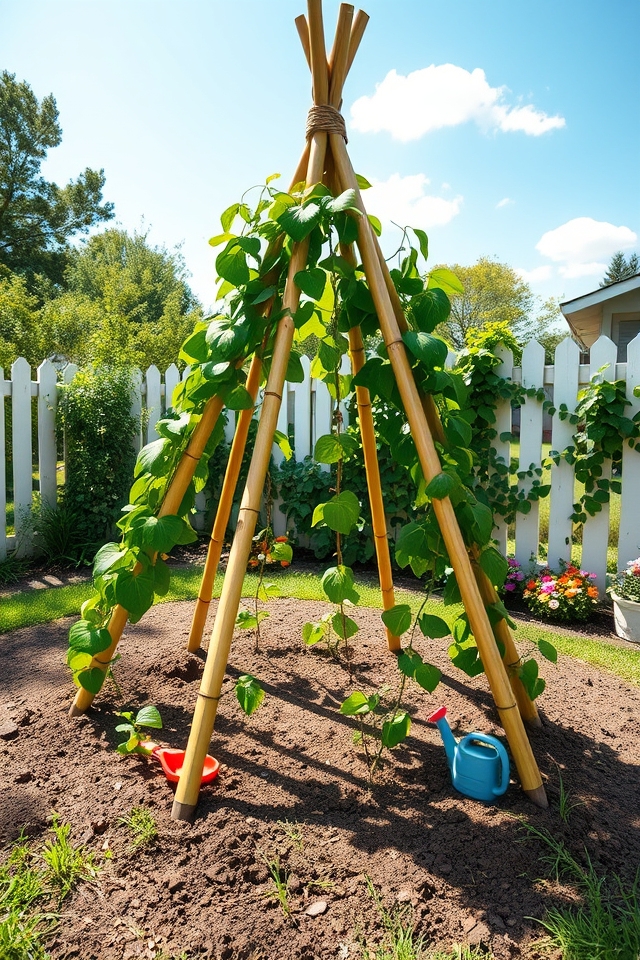
Creating a Bean Teepee for kids is a fun and educational project for Eat Your Beans Day. Start by arranging tall bamboo poles or sturdy sticks in a circle, tying them together at the top to form a teepee shape. Plant climbing bean seeds, like pole beans, at the base of each pole. As the beans grow, they’ll climb up, creating a green, shady hideout for children to play in while learning about gardening.
Maximizing Space With Container Beans

Container gardening is a fantastic way to grow beans when space is limited. Use pots, buckets, or grow bags with good drainage, placing them on balconies, patios, or windowsills. Opt for bush bean varieties, as they require less support than pole beans. Make sure containers are at least 12 inches deep to accommodate root growth. With proper sunlight and regular watering, you can maximize your yield even in the smallest of spaces.
Rotating Crops for Healthier Bean Plants
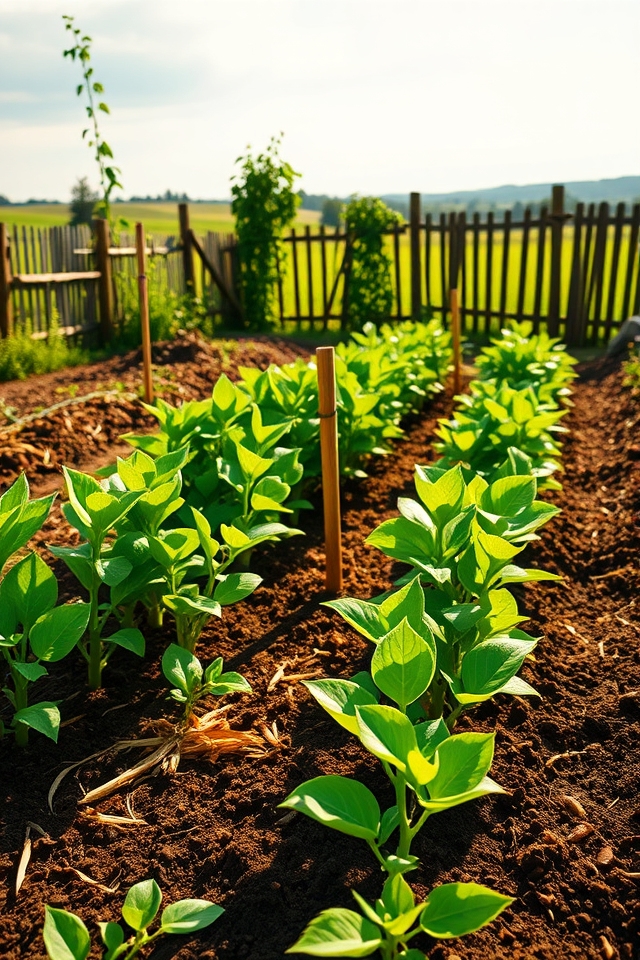
Rotating crops is an essential practice for maintaining healthier bean plants. By changing the planting location of beans each year, you prevent the buildup of pests and diseases specific to beans in the soil. Rotation also helps balance nutrient levels, as different crops use and replenish soil nutrients differently. This method guarantees that your bean plants grow in ideal conditions, leading to stronger plants and better yields in your veggie patch.
Adding Color With Ornamental Beans
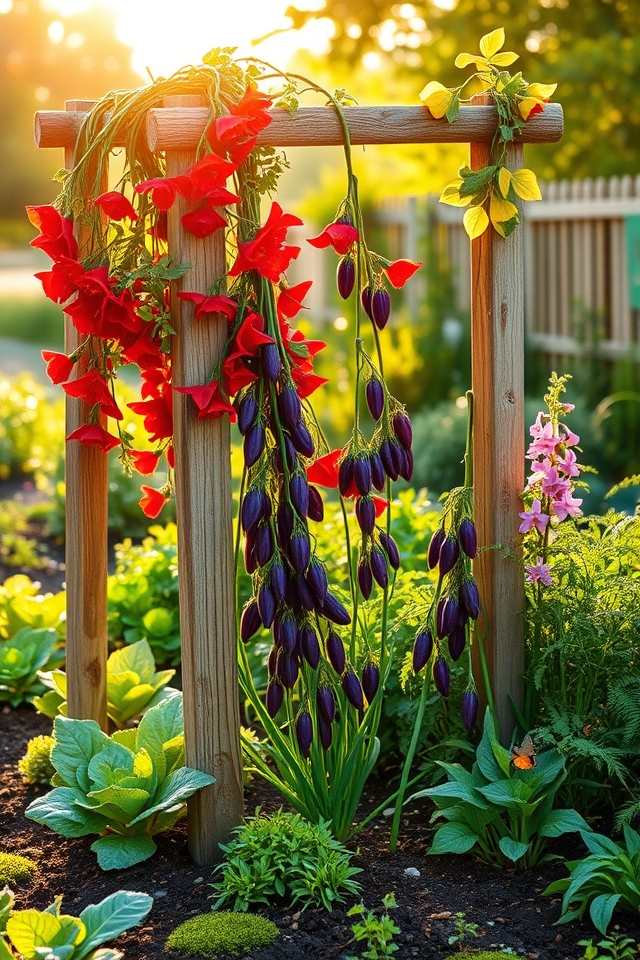
Adding color to your veggie patch with ornamental beans is a delightful way to enhance its visual appeal. Varieties like scarlet runner beans feature vibrant red flowers, while purple hyacinth beans showcase striking purple pods and blooms. These beans not only provide a pop of color but also attract pollinators, benefiting your garden. Plant them on trellises or fences for a stunning vertical display that combines beauty with functionality.
Timing Your Bean Planting for Success
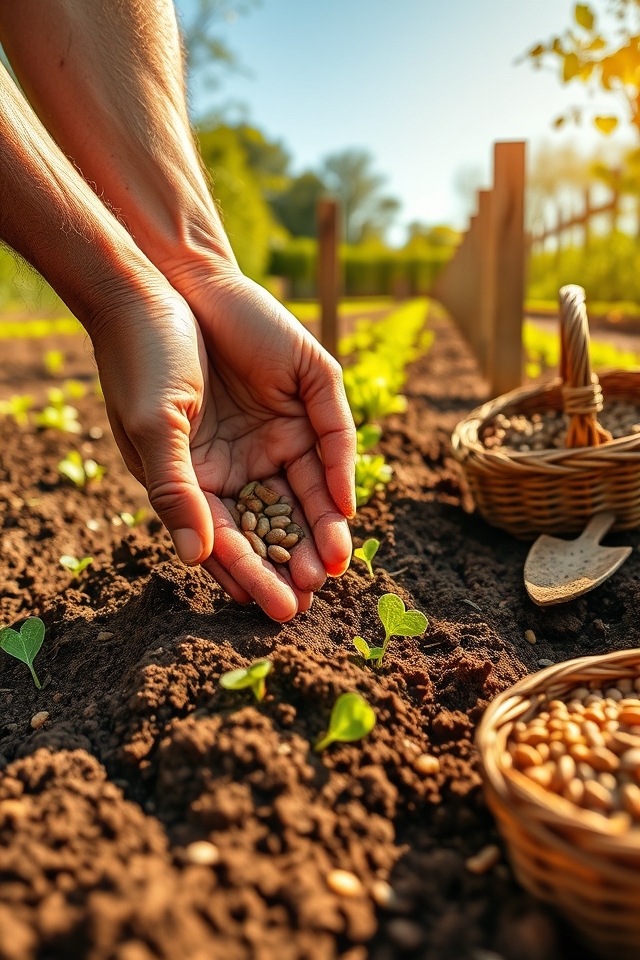
Timing your bean planting is vital for a successful harvest. Beans thrive in warm soil, so wait until after the last frost, typically in late spring or early summer, when soil temperatures reach at least 60°F (16°C). Planting too early can lead to poor germination. For a continuous supply, stagger planting every two weeks until mid-summer. This guarantees a steady crop and maximizes your yield throughout the growing season.
Using Natural Pest Control for Beans
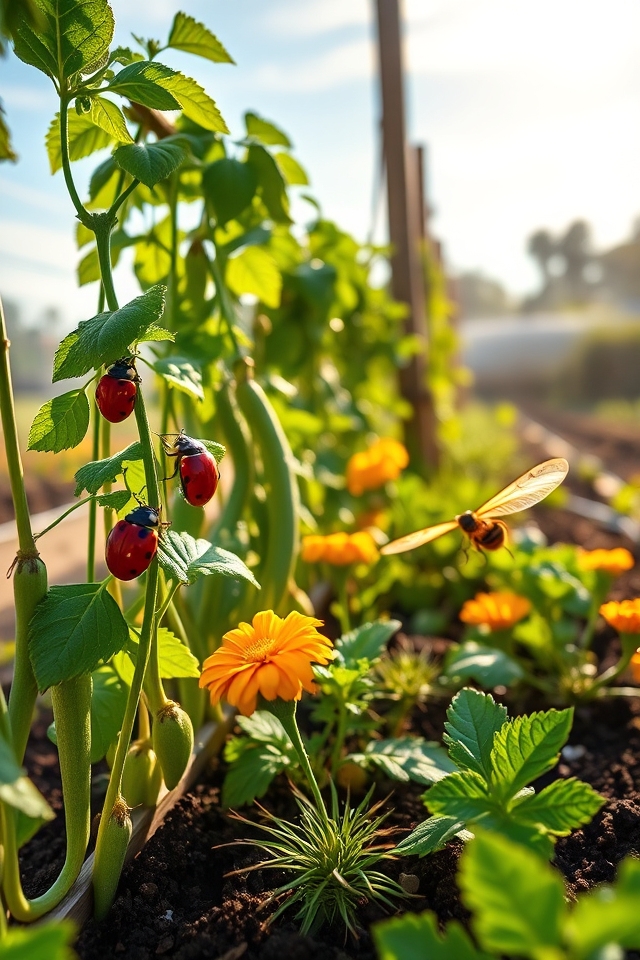
When growing beans, natural pest control is a sustainable way to protect your crop. Encourage beneficial insects like ladybugs and lacewings, which prey on common pests such as aphids. Planting companion crops like marigolds can deter harmful bugs with their strong scent. Additionally, using neem oil or insecticidal soaps provides a non-toxic solution to manage infestations. These methods help maintain a healthy veggie patch without relying on harsh chemicals, ensuring safe and organic bean harvests.
Harvesting Beans at the Perfect Moment
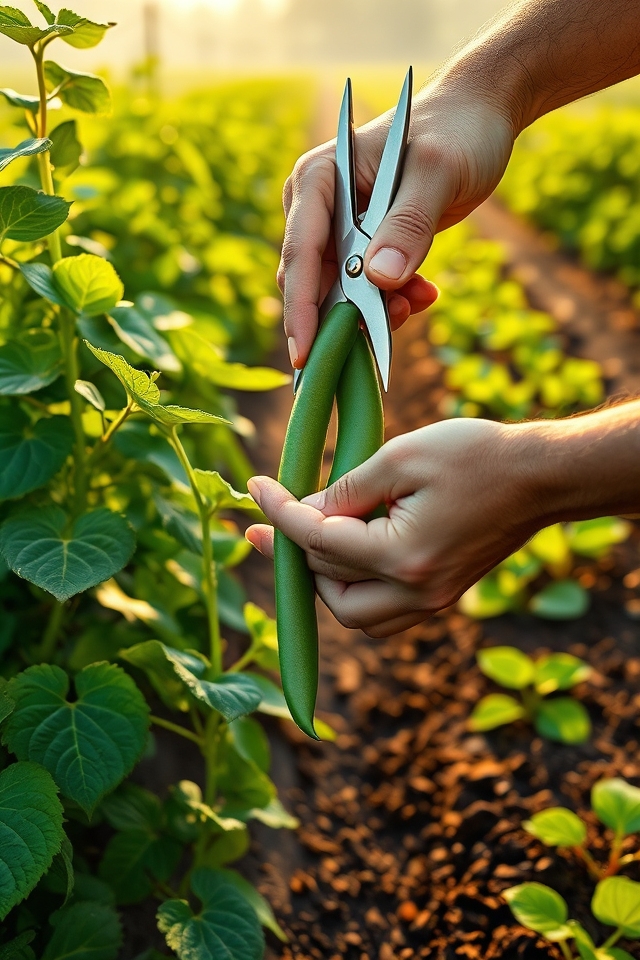
Harvesting beans at the perfect moment is key to enjoying their best flavor and texture. Pick beans when they are young and tender, typically when the pods are firm and snap easily, before the seeds inside become too large. Check plants daily during peak season, as beans can mature quickly. Use scissors or garden shears to avoid damaging the plant, and harvest in the morning for the crispest pods.
Saving Bean Seeds for Next Season

Saving bean seeds for next season is a simple and rewarding process. Allow a few healthy bean pods to fully mature and dry on the plant until they become brittle. Harvest the pods, remove the seeds, and make sure they are completely dry to prevent mold. Store the seeds in a cool, dry place in an airtight container or envelope, labeling them with the variety and date for future planting.
Mixing Beans Into a Themed Garden Design

Mixing beans into a themed garden design can add both beauty and functionality. For a rustic cottage garden, plant climbing beans on trellises alongside colorful flowers like nasturtiums. In a Mediterranean-inspired plot, pair bush beans with herbs like rosemary and thyme for a cohesive look. For a children’s garden, create a bean teepee with pole beans, offering a fun hideout while teaching kids about growing food. Beans blend seamlessly into any theme with thoughtful placement.


